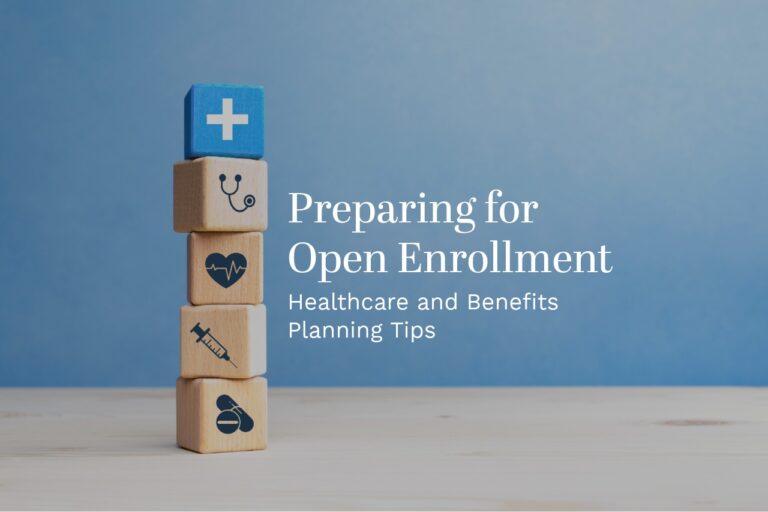Healthcare Open Enrollment Tips for Making the Most of Your Benefits
Open enrollment is an annual opportunity to review and adjust healthcare and benefits selections to align with individual and family needs. Whether you are choosing a health insurance plan, evaluating retirement contributions, or selecting additional benefits, preparation can help you make more beneficial decisions. Understanding your available options, assessing current coverage, and anticipating future needs are key steps in navigating open enrollment effectively. Here are some of the top healthcare open enrollment tips to review before you make your choices:
Reviewing Current Benefits
Before making changes, reviewing existing benefits is a helpful first step. Evaluating how well current healthcare coverage met past needs can provide insight into what adjustments might be necessary. Some considerations include:
- Medical Expenses: Reviewing out-of-pocket costs such as deductibles, copayments, and premiums can help determine if a different plan structure may be more suitable.
- Provider Networks: Checking whether preferred doctors and healthcare facilities are still covered under the current plan can prevent unexpected costs.
- Prescription Coverage: Assessing how prescription medications are covered under different plans can help avoid increased expenses.
Comparing Health Plan Options
Many employers and marketplace exchanges offer multiple health plan options, each with distinct costs and benefits. Common types include:
- Health Maintenance Organization (HMO): Typically requires choosing a primary care physician (PCP) and getting referrals for specialists, which may potentially lead to lower premiums and out-of-pocket costs.
- Preferred Provider Organization (PPO): Offers greater flexibility in choosing healthcare providers and specialists without referrals but may have higher premiums.
- High-Deductible Health Plan (HDHP): Features lower monthly premiums with higher deductibles, often paired with a Health Savings Account (HSA) for tax-advantaged savings on medical expenses.
- Exclusive Provider Organization (EPO): A hybrid plan that limits coverage to in-network providers but does not require referrals for specialists.
Comparing deductibles, out-of-pocket limits, premium costs, and network restrictions can help in selecting a plan that balances affordability and coverage.
Evaluating Health Savings Accounts (HSAs) and Flexible Spending Accounts (FSAs)
For those enrolled in an HDHP, an HSA allows tax-free contributions for medical expenses. Unlike FSAs, HSAs allow funds to roll over year after year. FSAs, offered through many employers, provide tax savings for qualified medical expenses but typically require funds to be spent within the plan year.
- HSA Benefits: Contributions reduce taxable income, funds grow tax-free, and withdrawals for qualified expenses are not taxed.
- FSA Considerations: Reviewing the balance of an FSA and planning expenses before the end of the year can help avoid losing unused funds.
Assessing Additional Benefits
Open enrollment is also an opportunity to review non-medical benefits that contribute to overall financial planning. Some common options include:
- Dental and Vision Coverage: Regular dental and vision care may not be included in standard medical plans but can be added separately.
- Life Insurance: Employer-sponsored life insurance policies can supplement individual coverage.
- Disability Insurance: Short-term and long-term disability coverage can provide financial support in case of illness or injury.
- Retirement Contributions: Reviewing 401(k) or similar retirement plans and adjusting contribution levels can help align savings with long-term financial goals.
Considering Dependent and Family Needs
For those with dependents, assessing family healthcare needs is an important part of open enrollment. Changes such as a new child, a dependent aging out of coverage, or a spouse’s job transition may impact benefit choices. Comparing employer-sponsored options with spousal or marketplace plans can help determine the most cost-effective approach.
Checking for Wellness Programs and Incentives
Some employers offer wellness incentives, like discounts on premiums for completing health assessments or participating in fitness programs. Reviewing these options may provide additional benefits beyond standard healthcare coverage.
Planning for the Enrollment Deadline
Missing the open enrollment deadline can result in being locked into current benefits for another year unless a qualifying life event happens. Marking key dates and gathering necessary documents, such as dependent information and previous medical expense records, can help streamline the enrollment process.
Healthcare Open Enrollment Tips to Help Make Informed Decisions
Open enrollment presents an opportunity to reassess your healthcare and benefits choices based on changing needs and financial considerations. By reviewing your current coverage, comparing available plans, evaluating supplemental benefits, and planning for the future, you can make the selections that align with your health and financial priorities.
Illuminated Advisors is the original creator of the content shared herein. I have been granted a license in perpetuity to publish this article on my website’s blog and share its contents on social media platforms. I have no right to distribute the articles, or any other content provided to me, or my Firm, by Illuminated Advisors in a printed or otherwise non-digital format. I am not permitted to use the content provided to me or my firm by Illuminated Advisors in videos, audio publications, or in books of any kind.








